If you’ve found yourself wondering how to write a cold email, you’re not alone.
I get a lot of emails from readers who struggle to find the right words to put in their pitch or who simply don’t know where to start.
It happens, but don’t make cold emailing harder than it has to be.
Think about it:
How much time do you spend writing and sending an email to a colleague or a friend?
Chances are, it’s nowhere near as long as you take painstakingly crafting a cold pitch to send to potential prospects.
This is where a lot of freelancers go wrong.
Read on to find out how to write a cold email that doesn’t take 100 years and that gets the attention of the people you want it to.
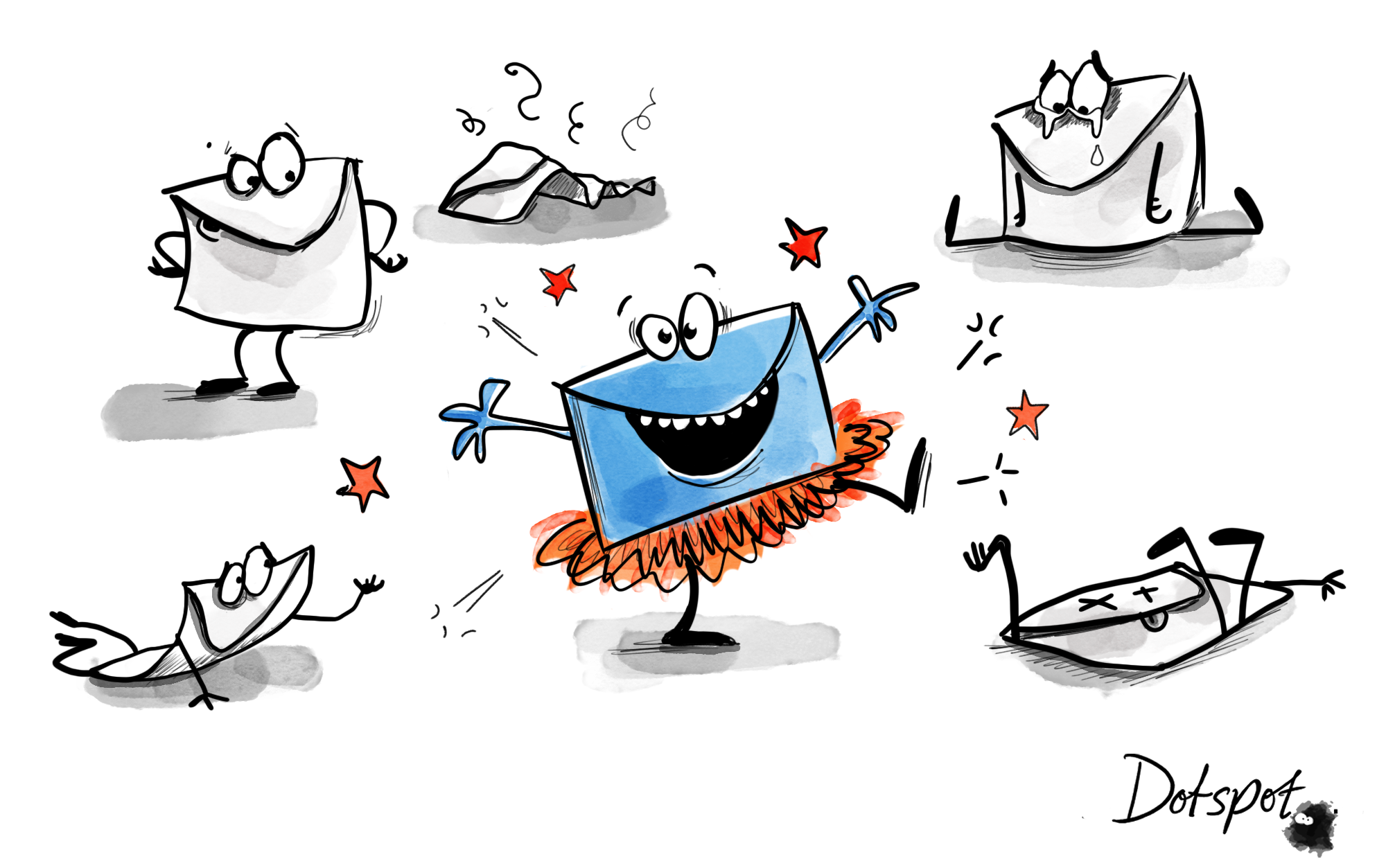
Cartoon by Dotti Colvin: www.dotspot.co.uk
How to Write a Cold Email: 7 Top Tips
Instead of highlighting the biggest mistakes freelancers make when writing a cold pitch, I’ve put together some insightful tips for pitching that will show you how to write a cold email without the hassle.
Let’s dig in.
Tip #1: Write Like You Speak
About five years ago, I put a call out for freelance researchers who could collaborate with me on a guide I was writing about Paris.
No joke, I received about 150 responses. It was madness. But the thing that stood out to me the most was how robotic the majority of the pitches were.
You know, all those long words and stuffy language that are much better placed in the corporate world (and even then it’s questionable).
The freelancer I went with in the end wrote to me like I was a human being (because, last time I checked, that’s exactly what I am).
Remember, there’s a person on the other end of your email and now, more than ever, they want to speak to another human.
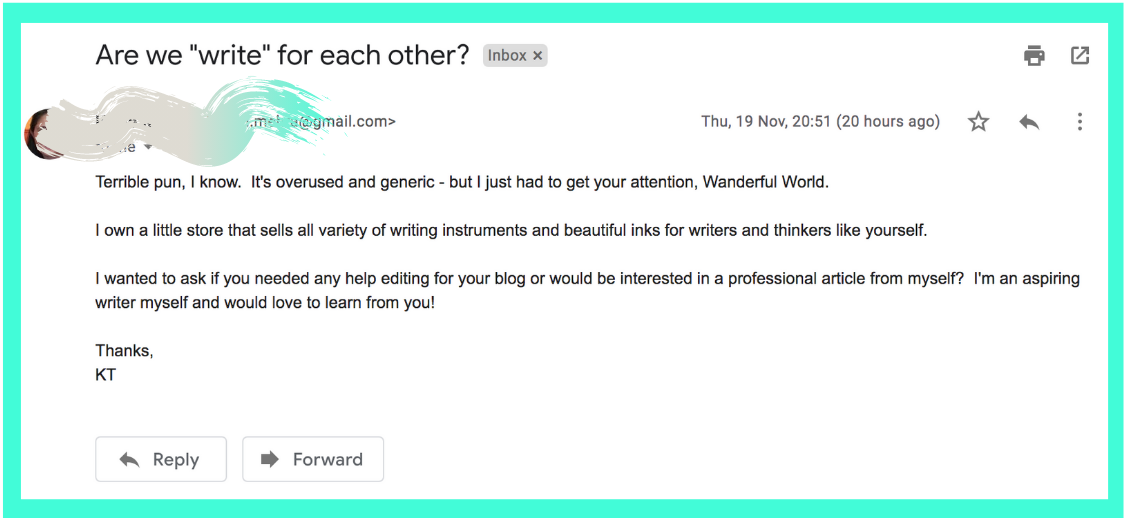
An example of a cold email I received recently that felt very human.
Here are some fast action points:
- Read your pitch out loud – if it sound stilted and “off”, it probably is
- Pretend you’re writing to a friend
- Use simple language (the kind you would use if you were speaking face-to-face with the prospect)
Tip #2: Offer a Small Service to Start
This isn’t necessarily a tip for how to write a cold email, but it will certainly help you turn more prospects into actual, paying clients.
The thing is, clients want proof that you can do what you say you can.
Sure, your portfolio should give them a little sneak peek, but often the commitment of hiring a freelancer is stressful (I’ve worked with plenty of clients who’ve had a bad experience with freelancers in the past and it’s made them wary of making huge investments going forward).
To provide peace of mind, offer a mini version of your service.
This could be one blog post or one page of copy as a standalone service. This will ease them into working with you, and one post or page is much less of a commitment than an entire website or a month’s worth of content.
Alternatively, you can create what I call a “pre-service”.
Essentially, this is a small commitment that leads into your main service.
For example, it might be a content audit, detailed keyword research, a month’s worth of article ideas, or optimisation of an existing article.
All of these would lead organically into a full-on content package, but they are a much smaller investment to begin with.
Here are some fast action points:
- Think about a service that a prospect might need before they require your main service
- Offer a pared back version of your main service to begin with
Tip #3: Make It Really Easy for Clients to Take the Next Step
Okay, I know I said I wouldn’t talk about the biggest mistakes freelancers make when writing a cold email, but this is worth mentioning.
I often see a lot of pitches that don’t have a call-to-action (CTA) anywhere in them. They often just end with a “thanks very much, bye” kind of situation which could be losing you a ton of custom.
Rather than assuming prospects know what to do once they’ve read your email, hand-hold them through the process.
Tell them exactly what the next step is and how they can take it.
For example, if you want to get them to set up a call with you, instead of saying “would you be interested in a call”, say something like “Shall we set up a call for next week? I’ve got space available on Monday or Tuesday. We can talk through your needs and see which of my packages will get you the best results”.
See the difference?
The second example literally gives clients the choice of a Monday or Tuesday call and tells them what they can expect when they book that call.
When learning how to write a cold email, this should be lessons number zero: CTAs are crucial!
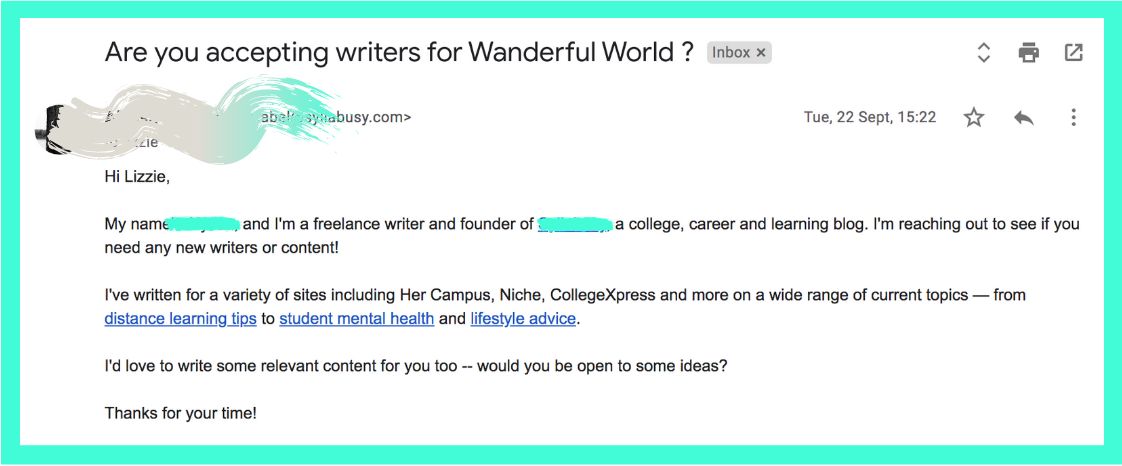
This is a cold email I received a couple of months ago. While it sounds human and provides proof, the CTA is very vague. Ideally, this writer would offer up some suggestions or ask what’s on my content calendar that she might be able to cover.
Here are some fast action points:
- Choose ONE thing you want prospects to do after they’ve read your email
- Tell them EXACTLY how they can do that
- Run through the process with them so they know what to expect
Tip #4: Follow Up
Let’s face it, high-paying prospects are likely very busy.
They’re juggling a lot of plates and it’s important to remember this when writing a cold email.
Just because they don’t get back to you the first time, it doesn’t mean they’re not interested in your services full stop.
This is where following up comes in and saves the day.
It’s so important, but so underdone.
The key is to keep it professional and be sensitive to busy lifestyles and stressed recipients.
After you send your first email, wait 7-10 days and then send a very short email to follow up. This should simply say that you want to check in and see where they’re at with their content needs or design needs (or whatever needs they might have relating to your services).
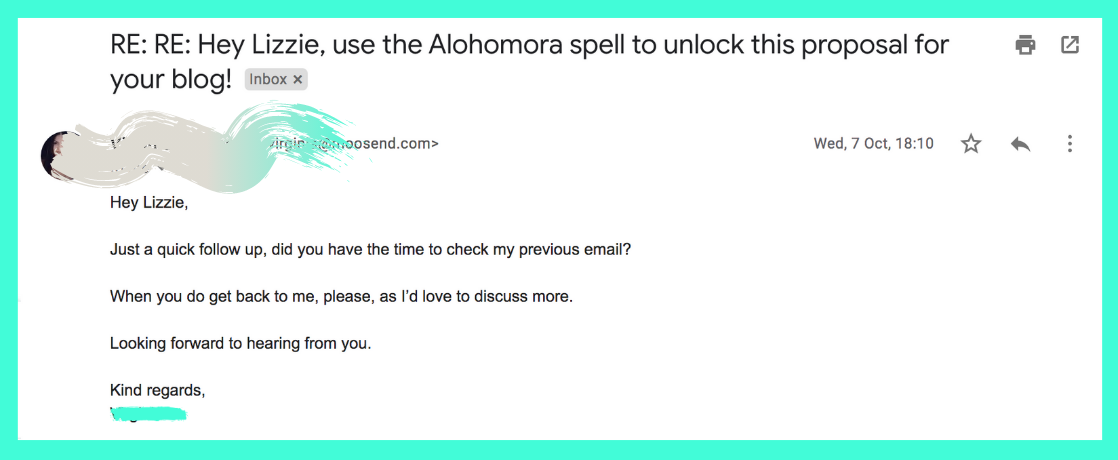
Give them their due, this writer was persistent with their follow ups!
Here are some fast action points:
- Log your cold emails in a spreadsheet and mark the date you sent them
- Keep your follow-up emails short (like, 2-3 sentences short)
- Remind prospects about your CTA at the end of your follow up email
Tip #5: Make It All About the Client
If you’re stuck on how to write a cold email, I’ve got one piece of advice that should stand out above all others: make your email about the client.
So many freelancers make the mistake of doing the whole “I can do this… I can help you do that… me, me, me” and making it all about them.
Instead, put the prospect at the centre of your pitch and make it all about them. Touch on their pain points and make your services relatable to their needs so there’s no doubt that you understand them and their needs.
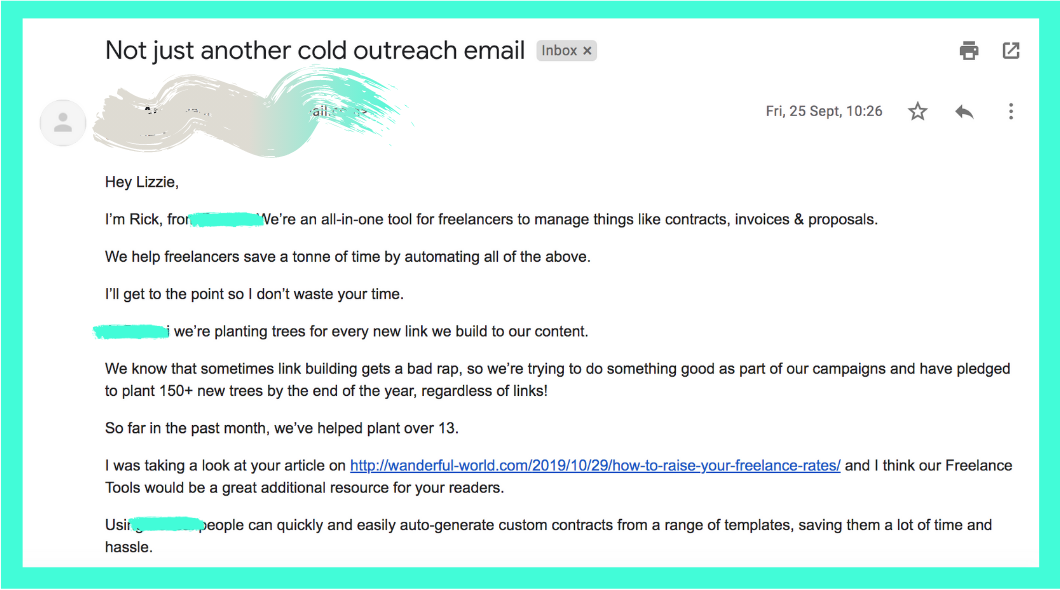
While I like the sentiment behind this email, it’s waaaay to focused on the sender than the recipient.
Tip #6 Make Your Subject Line Count
Before your email content even gets a chance, the subject line needs to do some heavy lifting. It’s the first thing a potential client sees, and it can determine whether your email gets opened or deleted.
Your subject line should be clear, concise, and intriguing. It’s not the place for vagueness or clever wordplay that might confuse the reader. Instead, think about how to grab your prospect’s attention while setting expectations for what they’ll find inside.
Here are some ways to create compelling subject lines:
- Put the Pain Point First: Address the client’s challenge upfront, like “Need engaging content to boost your email list?”.
- Personalise If You Can: Use the recipient’s name or brand, such as “How I can help [Brand Name] stand out”.
- Use Questions: Spark curiosity with questions like “Ready to boost your conversion rates?”
By taking a few extra moments to craft a solid subject line, you increase the chances of your email being opened and, ultimately, landing the client.
Here are some fast action points:
- Think about the biggest challenge your prospects face and why they should care about what you’re offering
- Before you send your email, check for sentences that start with “I” and change them to focus on the prospect
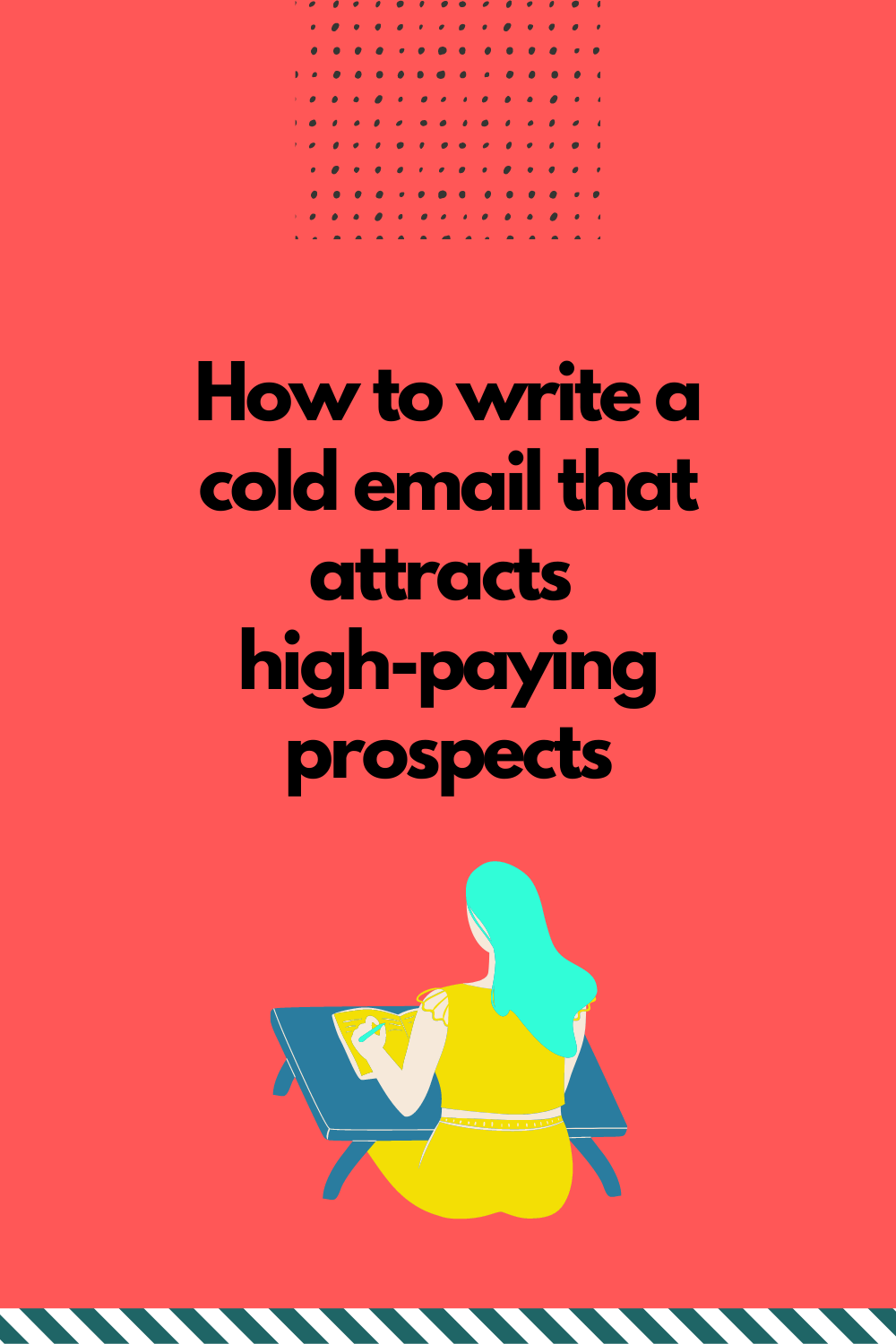
Writing a Cold Email Doesn’t Have to Be Hard
Learning how to write a cold email isn’t easy, but it definitely doesn’t have to be hard.
The key is to keep it conversational and put your prospect at the centre. This shows you understand their needs and have positioned yourself well to provide a solution.
If you’re ready to start cold pitching and want to walk through the whole process from start to finish, my course Pitch & Prosper does that for you.






This entire post is solid gold, Lizzie- thanks so much!
Think you could pop in an actual client pitch email template too, if that works for you? It’d be awesome to see your tips in action.
nice blog. really good.